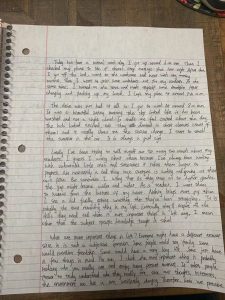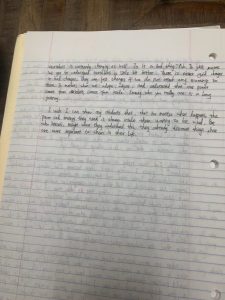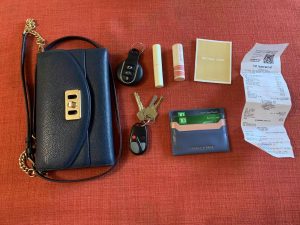

I normally write personal things (journal, cards, letters, etc.) by hand, and use the laptop to write things that are for work or school (email, essays, reports, etc.). I found this task easy because I wrote a daily reflection and just let my thoughts lead me the whole time. I am used to writing down my thoughts and ideas by hand and this is what I feel comfortable doing. It would be a different story if I were asked to compose a story or something that requires more planning. It brought an interesting realization to me that I have not been writing anything formal by hand for a very long time. I think that the main reason is that institutions and workplaces have been highly digitalized and we are so well-trained to type.
When it comes to editing the writing, it really depends on what I am writing. If I am writing something in my journal or anything for myself, I just simply cross it out. If I do not like the whole page, I tear it from the notebook and throw it in the trash can. However, if I am writing to someone, I would first write a draft on a piece of paper and edit it before I write it down on the actual card/letter paper carefully with my neatest printing. If I am typing electronically, it is much easier to edit since I can just delete the words easily. I also use grammar check and proofreading applications to edit my paper after I finish typing on my laptop. They are not the best, but they are convenient to use and provide some basic support. This is something that cannot be done if I am writing manually.
The most significant difference I notice between writing by hand and using mechanized forms of writing is efficiency. Given the same amount of time, I can type way more words than writing, and editing becomes effortless. However, I do find when I write, the content feels closer to my heart since I am always writing things more personal on paper. When using mechanized forms of writing, it does not feel as genuine as handwriting. To me, typing makes me feel like I am finishing a task or getting something done because it is required (which is not always the case). It is hard to say which one I prefer because they both have their advantages and drawbacks. I actually enjoy saving handwriting for my personal reflections and typing efficiently for professional writings.
